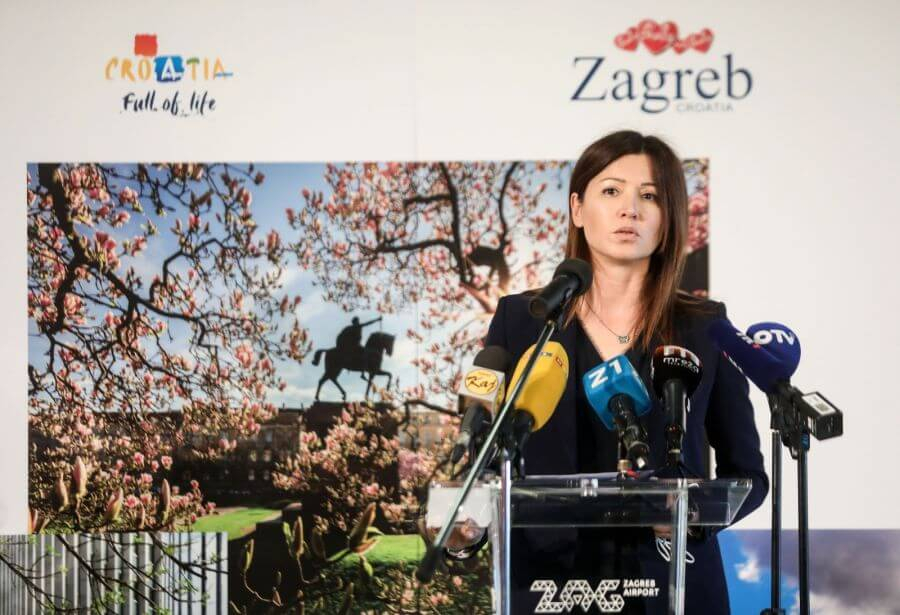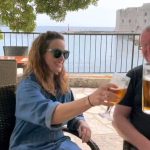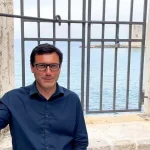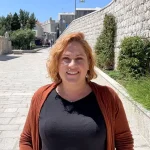As translated from Seebiz.e, Zagreb Digital Nomad Week 2021 and the Digital Nomad Ambassador project TZGZ is organising together with Saltwater Nomads (a company specialising in organising digital nomads’ stays in Croatia) and Total Croatia News (media portal).
It is these programs focusing on digital nomads that were the motivation for our conversation with Martina Bienenfeld, the head of the Zagreb Tourist Board.
SEEbiz: what was the main motivation behind deciding for the Zagreb Digital Nomad Ambassador program?
Bienenfeld: Last year changed the way of life for many people. The pandemic, which made working from home common, accelerated the trend of digital nomads and we now have generations of employees that are no longer bound by working hours, but wish to enjoy a more flexible way of life. Also, at the beginning of this year, the new Law on Foreign Nationals came into power. Under it, digital nomads can be allowed to stay in Croatia for up to a year on a non-resident basis. Zagreb, being the capital city, didn’t want to miss out on this growing opportunity, so we’ve decided to organise Zagreb Digital Nomad Week and the Zagreb Digital Nomad Ambassador project.
SEEbiz: it is no secret many fast-expanding IT companies have their headquarters in Zagreb. Is this one of the reasons Zagreb is perceived as a destination for digital nomads? What are the prerequisites Zagreb needs to fulfil to become an attractive and desirable destination for this demographic?
Bienenfeld: That certainly is one of the reasons, but there are numerous factors that influence the choice of a destination. Above all, digital nomads are staying within one place as long as they can and want, and because they are working they value quick and reliable internet connection more than anything, which means the destination needs to have good quality telecommunication infrastructure. After that, they need good value for money and accessibility of co-working spaces. Nice weather is also high on the list. Also, proximity or at least easy accessibility of the destination is one of the conditions. Zagreb offers all these things. In this sense, the level of attractiveness of Zagreb is high and I believe there is potential to grow further, especially seeing how we are one of the first countries to regulate this type of work by law.
SEEbiz: Do you believe digital nomads are just a trend that is, among other things, here because of a global pandemic or is it something that will remain after this situation has subsided?
Bienenfeld: Assessments and research suggest more and more people will want to work independently like this in the future. In other words, they will want the freedom to travel and the ability to work where ever they are at any given time. Therefore, I believe this is not a passing trend, but a new style of working and living that will remain long after this situation.
SEEbiz: The Croatian Tourist Board (HTZ) digital nomads campaign “Croatia, your new office!” garnered great results in the first two months. What are you expecting from the projects taking place in Zagreb?
Bienenfeld: I’m expecting Zagreb to further improve its position as a desirable destination for digital nomads. Croatia’s capital can surely be positioned as a centre for digital nomads and draw in foreigners coming for work and leisure.
SEEbiz: Zagreb has been recognised as a city break destination. In spite of all the restrictions, Zagreb was a good host for Croatia Rally, and then there is also the World Rowing Cup. Is sport, professional or recreational, one of the ways of attracting digital nomads?
Bienenfeld: As I mentioned before – you always need a combination of different factors in order to attract digital nomads. Generally, when speaking of sporting events, we have to be aware they are one of the most important ambassadors of any country or the city in which they are being held. We at TZGZ are especially pleased Zagreb hosted such huge sporting events – World Rally Championship and World Rowing Cup – during these times of uncertainty. This points to the significance of our city in the segment of sports tourism as a special part of the travel industry which contributes to the creation of new quality and competitive position in the travel market. Namely, events like these cast a spotlight on the host destination and make organisers of other similar events across the world consider organising their future events in the same city or country. In the same way, the effects of such a synergy of sports and tourism add to the popularity of the destination hosting these events and represent one of the best ways of promoting Zagreb as well as Croatia.
SEEbiz: Zagreb Tourist Board saw a focus on developing new digital platforms proving successful. How do you view the importance of digitalisation in tourism?
Bienenfeld: Tourist Boards always kept pace with new technological trends and implemented them readily into their projects. We need only remember Zagreb Be There app developed in now distant 2014, which was a multiple award-winning treasure hunt sightseeing app, or QR code city tour implemented in 2013. The pandemic and, unfortunately, Zagreb earthquakes, taught us the importance of being able to respond well and quickly to new situations, follow trends by using digital tools and platforms, and adjust our tourism offer to new conditions. We have turned to digital innovations that allow us to add value, attractiveness, but also visibility to our tourism offer. A recent example is the interactive AR project Virtual Christmas Windows, in which we were first in Croatia to apply augmented reality technology in our Christmas festival awareness campaign. Digitalisation in tourism is imperative today. Tourism and technology are tightly intertwined and travel is unthinkable without digital technology.
SEEbiz: The Around Zagreb project and cooperation of the Zagreb Tourist Board and Zagreb County Tourist Board is one of the first big steps in strategic destination development in Croatia because the focus is on quality content and finding new benefits for tourists, seeing how it promotes quality tourist-focused content in Zagreb’s surroundings or only half an hour from the city centre. Zagreb and its surroundings as a unique green destination, is this the strategy for the post-pandemic period?
Bienenfeld: I’m glad you’ve asked me that as we are just starting with our refreshed campaign in cooperation with the Zagreb County Tourist Board, and soon we will go ahead with Krapina – Zagorje County as well. Project Blizu grada, blizu srca (Close to the City, close to Heart) / Around Zagreb is created with a long-term goal and vision and we would like to have started it even without the pandemic situation. It is natural for Zagreb and its surrounding area to promote together because guests do not care about our administrative borders. They are after quality and interesting content. The pandemic in a sense helped the campaign along because guests are now, more than ever, searching for the options of spending time in nature, on fresh air, surrounded by greenery, all combined with diverse local culture and gastronomic offer.
Last year, most of the visitors to www.aroundzagreb.hr came from Croatia (40%), but also from the markets where the campaign was run – Slovenia (35%), Austria, Germany, and Bosnia and Herzegovina (25%). Interestingly, we are seeing a rising interest from the American market as well, even though there was no advertising campaign specifically aiming at that market, which represents a guideline for future activities. Inspired by the success of the campaign so far, recording over 37 million views, we have improved our platform and are showing it to the important markets again. With this in mind, along with refreshed visuals and itineraries, we have started a new section called “Did You Know?” which showcases various interesting points from our surrounding areas. Besides that, we also have cooking videos featuring authentic local cuisine recipes from Zagreb and the surrounding area. They are made by the famous Croatian chef Mr. Almo Catlak. He set out to present local delicacies to a wide audience with an emphasis on tradition with a bit of a modern approach. We are now starting the campaign for the markets of Austria, Bosnia and Herzegovina, Slovenia, Serbia, and Germany and soon we will be updating it with Krapina – Zagorje County materials. I would hereby also like to give my thanks to all involved in this.
SEEbiz: Zagreb is also an airplane destination. What effects do you expect as a result of RyanAir coming to Zagreb Airport, or how important in this respect is the survival of the national airline company?
Bienenfeld: We welcome all new airlines coming to Zagreb and will be glad to see the RyanAir airplane “tales” among those of other companies already landing in our city. This will contribute to the further positioning of Zagreb as a city break destination and will make it more accessible to interested visitors. As far as the national carrier is concerned, we mustn’t forget it was Croatia Airlines that connected us to the rest of the world when all other companies stopped flying here during the toughest pandemic restrictions. In this sense, I wouldn’t compare these two airline companies because their profiles and business models are vastly different.
SEEbiz: We know we are living in very uncertain times, but at the end of the interview, let me ask you: What is your vision for the long-term tourism development of Zagreb.
Bienenfeld: We need to keep in mind it will take a few years after the pandemic for tourism to bounce back. The earthquake made things even more difficult because it damaged a variety of buildings, some of which contribute to tourist offers or architectural and urban distinctions of the city. The state of tourism will depend on the organisation and readiness of the destination to adapt to new conditions and provide solutions. Further development of tourism in a smart, responsible and sustainable way will depend on how much are we as a sector prepared for new challenges. From the perspective of tourism, it is clear more and more travellers take into account ecology and sustainability, and we, therefore, need to apply sustainable concepts in order to potentially make them into one of the key promotional factors.
Also, it is important to activate underused tourist resources and continue to develop key tourist products of the destination. With the goal of defining a stronger position in the travel market in this context, it is necessary to support innovative and creative development initiatives that contribute to further building of the destination as a centre for urban, regenerative, and cultural scene and encourage dispersion of tourist activities. For the MICE segment we are expecting a slower recovery, but we need to continue communicating with the organisers of conferences and events and position Zagreb as a regional centre for business meetings, gatherings, and conferences. I see additional potential in health tourism, sports and active tourism, and of course food tourism. In any case, what is important and we’ll continue to insist on is that Zagreb is and always was a people’s city.
For more on Digital Nomads in Croatia, click here











